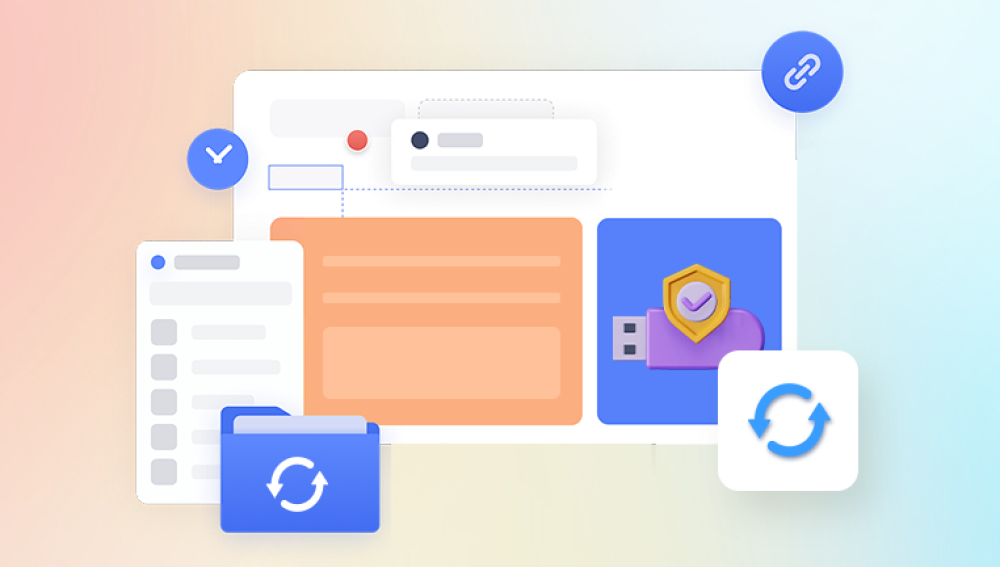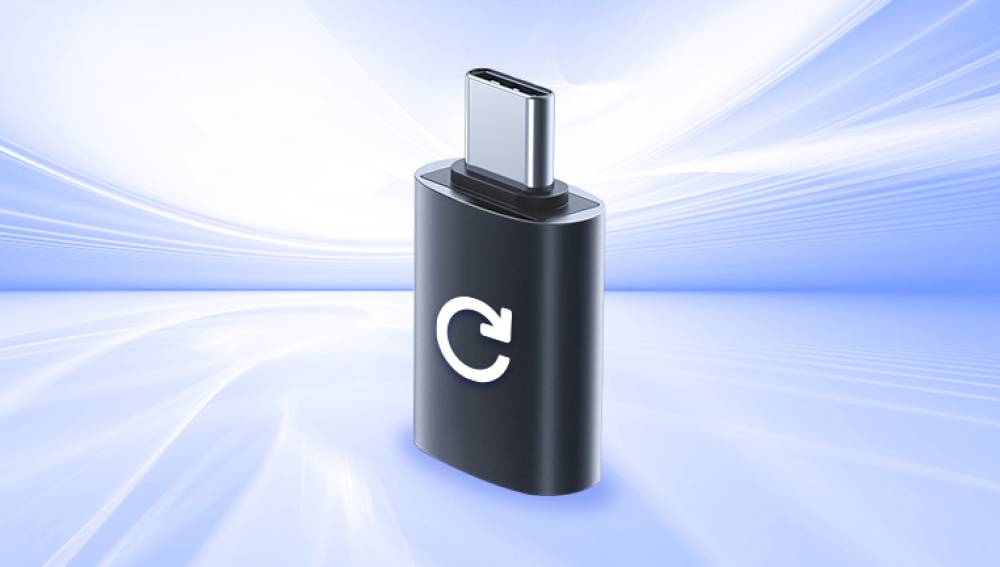Their compact design, portability, and ease of use make them a go-to device for students, professionals, and casual users alike. Whether you're moving a presentation from your home computer to your workplace, backing up important documents, or simply carrying a collection of media files, USB drives are incredibly versatile. However, as with any digital storage medium, they are not immune to data loss. Accidental deletion, formatting errors, virus attacks, and file system corruption are just a few scenarios that can lead to lost or inaccessible files on a USB drive.
Understanding USB Drive File Loss
Before delving into software solutions, it's essential to understand the common reasons for file loss on USB drives. Knowing the cause can influence which recovery method is best suited for the situation.
Accidental Deletion
One of the most common reasons for data loss is human error. It's all too easy to delete a file without realizing its importance or to clear the entire drive thinking the contents have already been backed up.

Formatting Mistakes
Formatting a USB drive can happen intentionally when switching file systems or due to system prompts. In some cases, the user may format the drive without knowing that it contains crucial files.
Corruption
File system corruption can result from improper ejection, sudden power loss, or a virus infection. When the file system is damaged, the operating system might be unable to read the data, rendering the drive seemingly empty or inaccessible.
Virus and Malware Attacks
USB drives are often susceptible to viruses, especially when used on multiple computers. Some malware hides, deletes, or encrypts files, leading to data loss.
Physical Damage
Physical issues like broken connectors or internal hardware damage can also lead to data loss. In such cases, recovery becomes more complex and may require professional services.
How USB Drive Recovery Software Works
File recovery software for USB drives operates by scanning the drive’s storage sectors for traces of deleted or lost files. When a file is deleted from a USB drive, its data isn’t immediately erased. Instead, the file system simply marks that space as available, meaning the data remains intact until overwritten.
Recovery software capitalizes on this by:
Scanning for file signatures and metadata fragments.
Reconstructing files based on these signatures.
Providing a preview of recoverable files before restoration.
Most recovery programs offer both quick and deep scan options. A quick scan is faster and suitable for recently deleted files, while a deep scan takes longer but uncovers more buried or fragmented data.
Key Features to Look For in USB Recovery Software
When choosing file recovery software for your USB drive, not all tools are created equal. Here are some important features to consider:
User Interface
A clean, intuitive interface is essential, especially for non-technical users. Look for software that guides you step-by-step through the recovery process.
File Type Support
Choose software that supports the recovery of various file types, including documents, photos, videos, audio files, and archives.
Preview Functionality
The ability to preview files before restoring them is invaluable. It helps ensure you're recovering the correct items.
Scan Options
Software with both quick and deep scan capabilities offers flexibility depending on the severity of the data loss.
Compatibility
Ensure the software works on your operating system—Windows, macOS, or Linux—and supports different file systems like FAT32. exFAT, and NTFS.
Reliability and Recovery Rate
The software should have a high success rate and be known for reliable performance across various data loss scenarios.
Customer Support and Documentation
Good recovery software often comes with access to technical support, FAQs, and guides to help you navigate any difficulties.
Free vs. Paid Versions
Many recovery tools offer free versions with limited features or recovery size limits. Assess whether the free version meets your needs or if a paid upgrade is warranted.
Step-by-Step Guide to Recovering Files from a USB Drive
Recovering lost data using USB recovery software is often straightforward. Here's a general workflow that most applications follow:
Stop Using the Drive
As soon as you notice data loss, avoid writing new data to the USB drive. Continued use risks overwriting recoverable files, making them harder—or impossible—to retrieve.
Install Trusted Recovery Software
Download and install your chosen recovery software on your computer. It's best to install it on a different drive (not the USB drive in question) to prevent overwriting.
Connect the USB Drive
Insert the USB drive into your computer and ensure it's recognized by the system.
Launch the Software and Select the Drive
Open the recovery program and choose the USB drive from the list of available storage devices.
Scan the Drive
Initiate a scan—either quick or deep depending on your needs. Wait for the scan to complete. This may take a few minutes to hours depending on drive size and scan depth.
Preview and Select Files to Recover
After the scan, browse through the recoverable files. Use preview features to confirm file integrity, then select the files you want to restore.
Recover and Save Files
Choose a different location (not the original USB drive) to save the recovered files. This minimizes the risk of overwriting and data loss.
Popular USB Drive File Recovery Software Options
Here are several reliable and widely recommended USB drive file recovery tools that cater to different user needs and budgets:
Drecov Data Recovery
Drecov Data Recovery is a reliable and user-friendly tool designed to help users recover lost, deleted, or inaccessible files from USB drives with ease. Whether you accidentally deleted important documents, formatted your flash drive, or encountered data corruption, Drecov Data Recovery offers a straightforward solution to retrieve your files without requiring technical expertise.
The software supports a wide range of USB drive brands and file formats, including documents, photos, videos, and audio files. Its powerful scan engine performs deep scans to locate files that are no longer visible or have been removed from the recycle bin. The intuitive interface guides users through the recovery process step by step, making it ideal for both beginners and professionals.
One of Drecov Data Recovery’s key strengths is its preview feature, which allows users to see recoverable files before restoring them. This ensures that only the necessary data is recovered, saving time and storage space. The software also supports various file systems, such as FAT32, exFAT, and NTFS, making it versatile across different devices and operating systems.
Recovery with Drecov Data Recovery is fast and secure. It does not overwrite existing data during the scan or recovery process, minimizing the risk of permanent loss. Whether your USB drive was affected by accidental deletion, virus attacks, or system crashes, Panda provides a dependable solution.
EaseUS Data Recovery Wizard
Known for its high recovery success rate, EaseUS is ideal for both beginners and advanced users. It supports a wide range of file types and offers a free trial with a limited recovery quota.
Disk Drill
Compatible with both Windows and macOS, Disk Drill boasts an intuitive interface and powerful scanning algorithms. It also includes additional tools like data protection and disk health monitoring.
Wondershare Recoverit
This versatile tool supports over 1000 file formats and various file systems. Its deep scan mode is particularly effective for damaged or formatted drives.
PhotoRec
An open-source and command-line based program, PhotoRec is incredibly powerful but may be daunting for novice users. It works across multiple platforms and can recover a wide variety of file types.
Stellar Data Recovery
Trusted in professional circles, Stellar provides comprehensive recovery options with customizable filters and previews. It supports USB drives, SD cards, and even lost partitions.
Limitations of USB Drive Recovery Software
While recovery software can be remarkably effective, it’s not a magic bullet. There are inherent limitations:
Overwritten Data
If new data has replaced the deleted file's original location, recovery becomes nearly impossible.
Physical Damage
Software can't fix physically broken USB drives. In such cases, professional data recovery services are necessary.
Incomplete Recovery
Sometimes, only partial file recovery is possible. The file may be recovered but corrupted or missing segments.
Encrypted Drives
Recovery is more complex or impossible without decryption keys, especially on drives protected by software encryption.
When to Seek Professional Help
If your USB drive is physically damaged (bent, broken, unrecognized by the system), making clicking noises, or suffering from deep corruption, professional data recovery services may be your best option. These specialists have the tools and clean-room environments required to open drives, extract data from memory chips, and bypass logical damage.
Some common scenarios warranting professional help include:
USB drives with broken connectors or ports.
Drives not recognized by any computer.
Drives containing critical business data or legal files.
Repeated recovery attempts that fail or worsen the problem.
Preventing Future Data Loss
Data recovery software is incredibly useful, but preventing data loss is even more valuable. Here are best practices to protect your USB drive data going forward:
Regular Backups
Always maintain multiple copies of important files on different media—another USB, cloud storage, or external hard drive.
Safely Eject the USB Drive
Use the “Eject” option before removing your USB drive to prevent file system corruption.
Keep Antivirus Software Updated
Protect your USB drive from malware with up-to-date antivirus protection, especially if you use it on multiple computers.
Avoid Using the Same Drive on Multiple Systems
Moving between computers increases the chance of exposure to corrupt systems or malicious software.
Be Cautious When Formatting
Double-check drive contents before formatting. If unsure, copy everything to a different location first.
Label USB Drives Clearly
Proper labeling reduces the chance of accidental formatting or deletion, especially in multi-drive environments.
USB drive file recovery software can be a lifesaver when you’re faced with accidental deletions, formatting errors, or corrupted files. These powerful tools make it possible to recover data you may have assumed was gone for good quickly and efficiently. Whether you choose free software for a one-time need or invest in a premium tool for long-term use, understanding how recovery works and choosing the right program can make all the difference.




